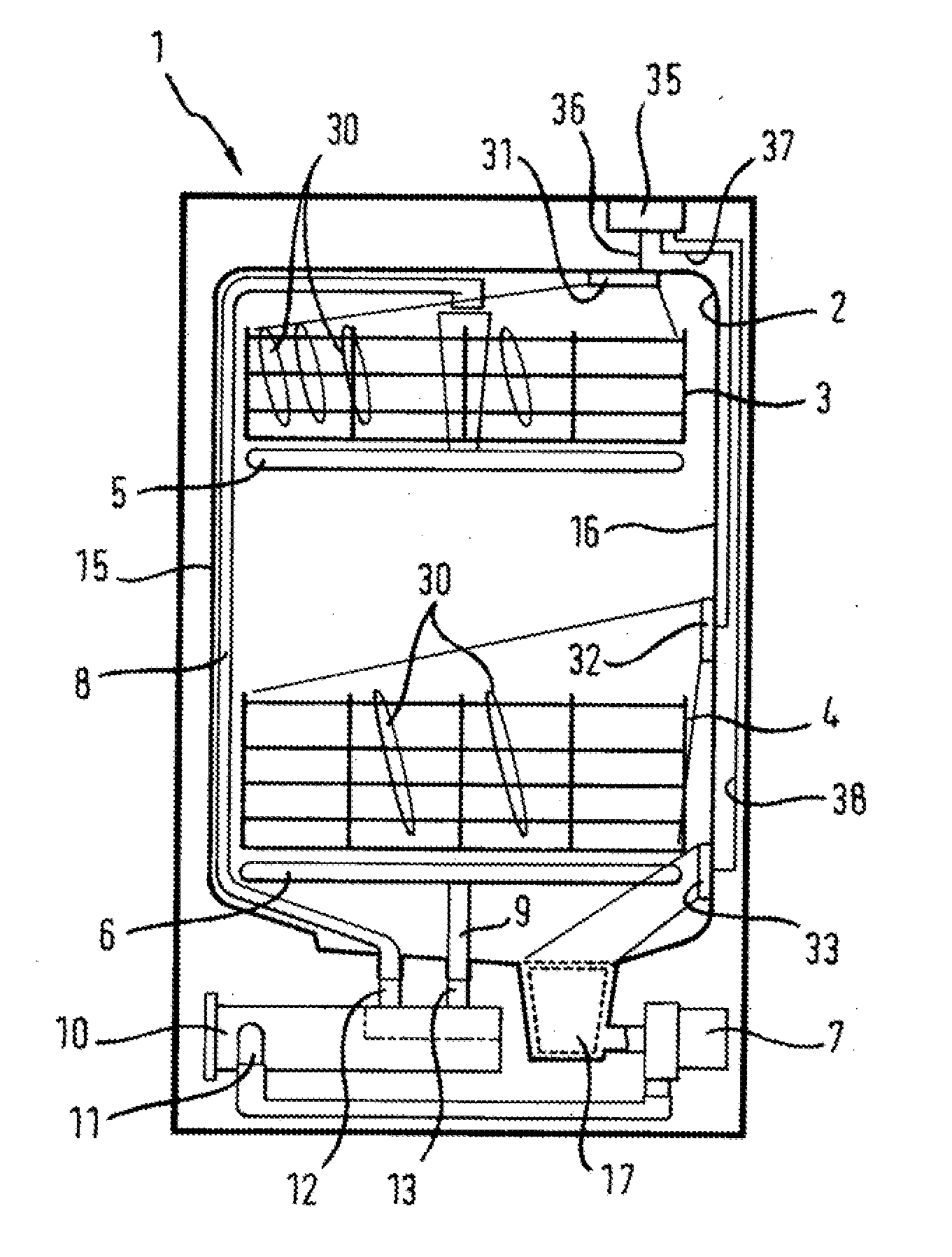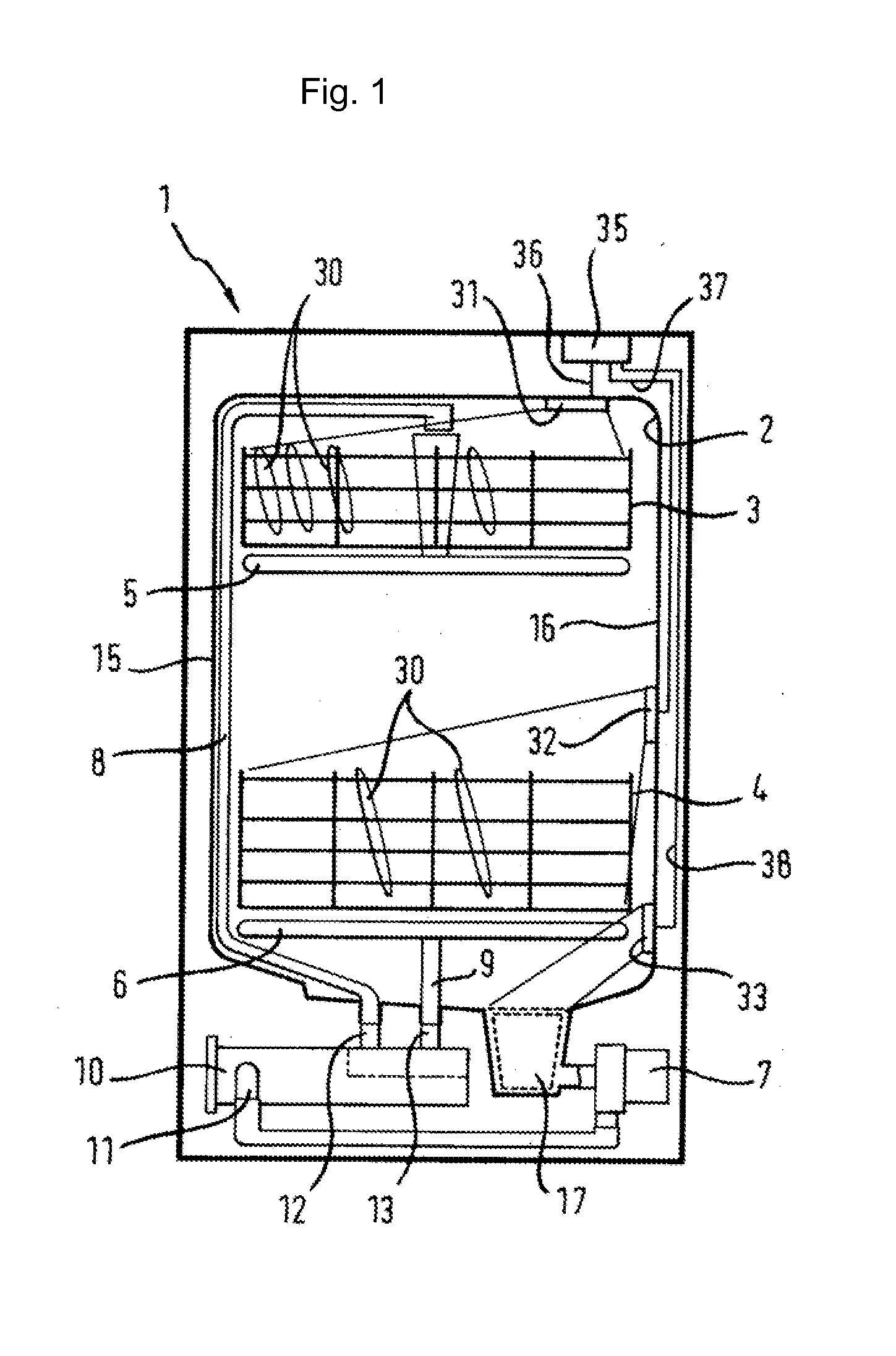Method for detecting the load of items to be washed, and dishwasher machine
a technology for washing items and washing machines, which is applied in the direction of washing/rinsing machines, cleaning processes and apparatus, and household cleaners. it can solve the problems of insufficient design, inaccurate load recognition, and items to be washed optionally positioned therein the crockery bask
- Summary
- Abstract
- Description
- Claims
- Application Information
AI Technical Summary
Benefits of technology
Problems solved by technology
Method used
Image
Examples
Embodiment Construction
[0028]The dishwasher machine 1 according to the invention has a washing container 2 in which crockery 30 to be cleaned, for example in the form of plates, pots, cutlery etc. is usually loaded in crockery baskets 3, 4 forming receptacles for the items to be washed. Two spray devices 5, 6 are arranged in the washing container 2 to act upon the items 30 to be cleaned with washing liquid. The washing liquid is conveyed to the spray devices 5, 6 by means of a circulating pump 7 in liquid supply lines 8, 9.
[0029]Washing liquid conveyed into the dishwasher machine 1 is usually heated in a partial program section of a washing program for which a continuous flow heater 10 is used. The conveyed washing liquid is guided from the circulating pump 7 to an intake connection 11 of the continuous flow heater 10 and through said continuous flow heater 10. Said heater has at least two output connections 12, 13 from which the liquid is fed to the respective spray devices 5, 6 via liquid supply lines 8...
PUM
 Login to View More
Login to View More Abstract
Description
Claims
Application Information
 Login to View More
Login to View More - R&D
- Intellectual Property
- Life Sciences
- Materials
- Tech Scout
- Unparalleled Data Quality
- Higher Quality Content
- 60% Fewer Hallucinations
Browse by: Latest US Patents, China's latest patents, Technical Efficacy Thesaurus, Application Domain, Technology Topic, Popular Technical Reports.
© 2025 PatSnap. All rights reserved.Legal|Privacy policy|Modern Slavery Act Transparency Statement|Sitemap|About US| Contact US: help@patsnap.com


